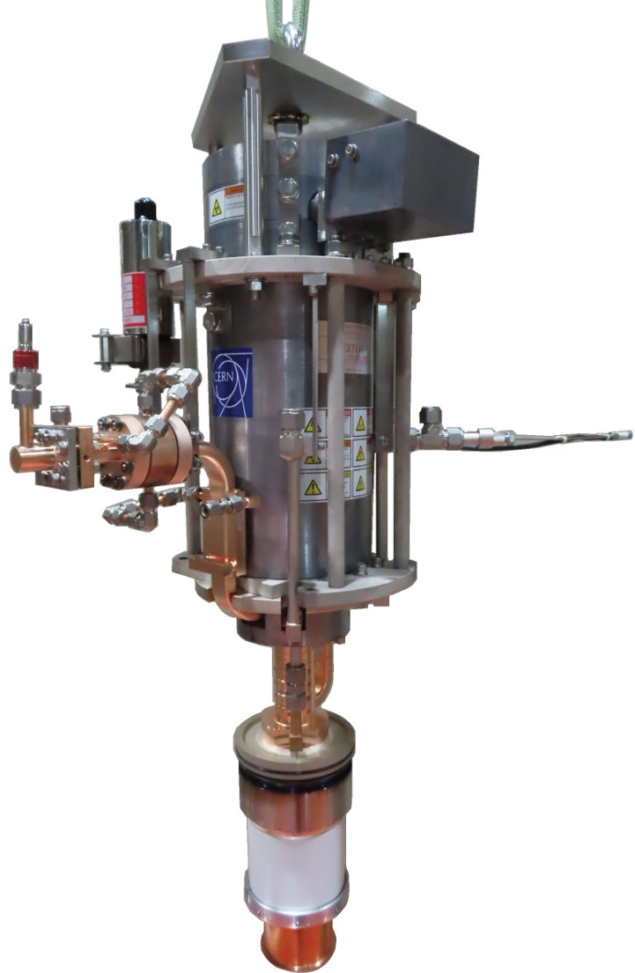
The radio-frequency (RF) cavities that accelerate charged particles in machines like the LHC are powered by devices called klystrons. These electro-vacuum tubes, which amplify RF signals by converting an initial velocity modulation of a stream of electrons into an intensity modulation, produce RF power in a wide frequency range (from several hundred MHz to tens of GHz) and can be used in pulsed or continuous-wave mode to deliver RF power from hundreds of kW to hundreds of MW. The close connection between klystron performance and the power consumption of an accelerator has driven researchers at CERN to develop more efficient devices for current and future colliders.
The efficiency of a klystron is calculated as the ratio between generated RF power and the electrical power that is delivered from the grid. Experience with many thousands of such devices during the past seven decades has established that at low frequency and moderate RF power levels (as required by the LHC), klystrons can deliver an efficiency of 60–65%. For pulsed, high-frequency and high peak-RF power devices, efficiencies are about 40–45%. The efficiency of RF power production is a key element of an accelerator’s overall efficiency. Taking the proposed future electron–positron collider FCC-ee as an example: by increasing klystron efficiency from 65 to 80%, the electrical power savings over a 10-year period could be as much as 1 TWhr. In addition, reduced demand on the electrical power storage capacity and cooling and ventilation may further reduce the original investment cost.
In 2013 the development of high-efficiency klystrons started at CERN within the Compact Linear Collider study as a means to reduce the global energy consumed by the proposed collider. Thanks to strong support by management, this evolved into a project inside the CERN RF group. A small team of five people at CERN and Lancaster University, led by Igor Syratchev, developed accurate computer tools for klystron simulations and in-depth analysis of the beam dynamics, and used them to evaluate effects that limit klystron efficiency. Finally, the team proposed novel technological solutions (including new bunching methods and higher order harmonic cavities) that can improve klystron efficiency by 10–30% compared to commercial analogues. These new technologies were applied to develop new high-efficiency klystrons for use in the high-luminosity LHC (HL-LHC), FCC-ee and the CERN X-band high-gradient facilities, as well as in medical and industrial accelerators. Some of the new tube designs are now undergoing prototyping in close collaboration between CERN and industry.
The first commercial prototype of a high-efficiency 8 MW X-band klystron developed at CERN was built and tested by Canon Electron Tubes and Devices in July this year. Delivering an expected power level with an efficiency of 53.3% measured at their factory in Japan, it is the first demonstration of the technological solution developed at CERN that showed an efficiency increase of more than 10% compared to commercially available devices. In terms of RF power production, this translates to an overall increase of 25% using the same wall-plug power as the model currently working at CERN’s X-band facility. Later this year the klystron will arrive at CERN and replace Canon’s conventional 6 MW tube. The next project in progress aims to fabricate a high-efficiency version of the LHC klystron, which, if successful, could be used in the HL-LHC.
“These results give us confidence for the coming high-efficiency version of the LHC klystrons and for the development of FCC-ee,” says RF group leader Frank Gerigk. “It is also an excellent demonstration of the powerful collaboration between CERN and industry.”







